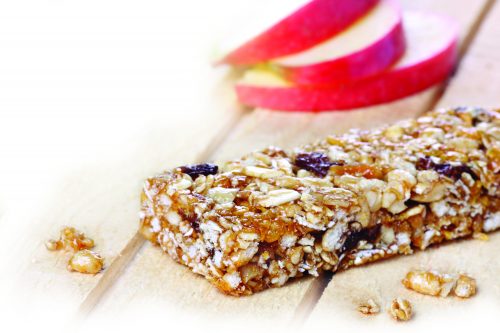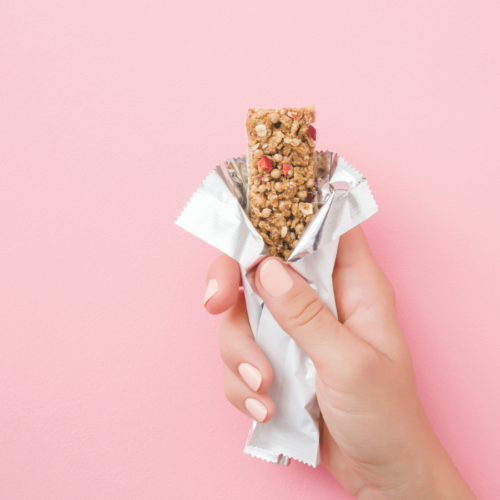
HFG senior nutritionist Rose Carr investigates the health value of snack bars on offer.
If we stood in front of the rows and rows of snack bars at our local supermarket we would be impressed by how healthy they look. The pictures and words tell us about wholesome foods and the more nutritious bars can help keep us going when we’re on the run. Some snack bars, however, are no better than eating a couple of biscuits — but at least most of us know that biscuits are a treat.
What’s available?
Wholegrains, nuts, seeds and fruit
Snack bars containing a higher percentage of whole grains, nuts, seeds and fruit will be higher in nutrients and fibre and provide longer-lasting energy and better health. Put these at the top of your list.
Less healthy choices
Bars wrapped with, or even with a topping of yoghurt or chocolate are generally higher in saturated fat, sugar and overall kilojoules.
Baked biscuit/cake-style bars
Usually higher in fat or sugar or both, and high in total kilojoules. In many cases, the serving size is also too small to be really satisfying.
Fruit bars and fruit-filled bars
High in sugars (some from the fruit), and can stick to teeth so they’re not very good for teeth if used in between meals. Some are also low in fibre so they are not very satisfying.
Rice-based bars
While low in kilojoules, contain little protein and virtually no fibre so they are not satisfying as a snack.
High-energy bars
Some snack bars are way more than a snack for most people. Bumper bars contain 1450kJ per bar, and as the name suggests, One Square Meal is designed to provide the energy of a meal, not a snack.
Choosing a snack bar
As a guide for energy, look for a bar with less than 600kJ but if you’re active and need a higher-kilojoule snack, the nut-based bars are a nutritious option. Remember: the amount of energy in the bar will depend on the ingredients as well as the size of the bar. A larger low-kJ bar may seem like a good choice but if it’s mostly air (as in puffed rice), it won’t be very satisfying. A small wholegrain bar is usually a better choice.
Eating too much saturated fat is a major contributing factor to heart disease so avoid snack bars containing more than 2g saturated fat.
The sugar content of snack bars can be high so as a guide, go for ones with 10g or less sugars per bar.
Fibre promotes a healthy heart and bowel as well as helping with weight management. As it’s not compulsory to list the fibre content on packaging, some manufacturers do, others don’t. As it’s an important nutrient for appetite control, try to avoid bars that don’t include fibre on the nutrition information panel. Also look for bars with a high amount of whole grains, nuts, seeds and fruit, which will be higher in fibre.
To select the best products, check the ingredients rather than relying on the visuals and words on the packaging.
Do our 'Chocolate Wheaten test'
Two Griffin’s Chocolate Wheaten biscuits (21g) provide us with 430kJ, 1.1g protein, 3g saturated fat and 7.6g sugars. Fibre is not listed, but likely to be between 0.5 and 1g. For a biscuit, these are a pretty good choice. And as we know them as ‘biscuits’, we’re unlikely to say to ourselves: “I’ll just have a couple of Chocolate Wheatens as a healthy snack to keep me going ‘til dinner.”
So if the snack bar doesn’t stack up a whole lot better than a couple of Chocolate Wheatens, let’s not kid ourselves: it’s a treat food. Treat it accordingly.
www.healthyfood.com










